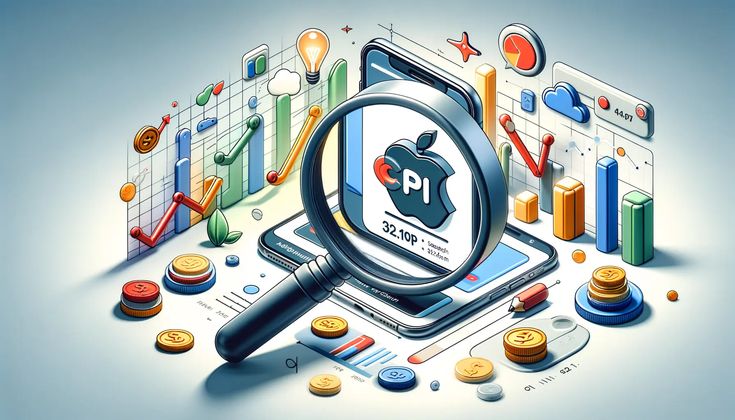When launching a mobile app, one of the most critical decisions you’ll make is how much to allocate to your marketing budget. A well-structured marketing plan ensures you reach your target audience, maximize visibility, and generate downloads. However, app marketing costs can vary greatly depending on the strategy, platform, and goals you set. In this article, we will break down the key factors to consider when planning your mobile app marketing budget, along with actionable insights on how to allocate your funds effectively.
1. Defining Your App’s Marketing Goals
Before diving into the numbers, you first need to define your app marketing objectives. Are you focusing on brand awareness, user acquisition, engagement, or conversion? Each goal requires different marketing channels and strategies, impacting the overall budget.
- Brand Awareness: If your primary goal is to get your app noticed in a crowded market, you’ll need to invest in high-visibility strategies such as paid ads, influencer partnerships, and PR campaigns.
- User Acquisition: For growth-focused campaigns aimed at driving installs, you’ll need to allocate budget towards performance marketing channels, including Google Ads, Facebook Ads, and app store optimization (ASO).
- User Engagement: Once users have downloaded your app, you’ll need a budget for retention strategies such as email marketing, push notifications, and in-app messaging.
- Conversion: If your goal is to convert users into paying customers or increase in-app purchases, you’ll need to allocate funds for user experience optimization and A/B testing.
By establishing clear goals, you can align your budget with the right channels to achieve maximum return on investment (ROI).
2. Key Marketing Channels and Their Costs
There are several marketing channels you can use to promote your app, and each comes with its own costs. Below is a breakdown of common app marketing channels, their costs, and the estimated budget you may need for each.
Paid Ads
Paid advertising is one of the most effective ways to drive immediate traffic and installs to your app. However, it can be expensive, especially in competitive industries. Here’s an overview of the main types of ads you can use:
- Social Media Ads (Facebook, Instagram, TikTok, etc.): The average cost-per-install (CPI) on social media platforms can range from $1 to $4 per install, but this varies based on targeting options and the app’s category. For example, gaming apps tend to have a higher CPI, while utility apps may have a lower CPI.
- Google Ads: Google’s Universal App Campaigns (UAC) allow you to run ads across various platforms, including Search, YouTube, and Google Play. CPI here is typically $2 to $10 depending on the competition and app niche.
- Apple Search Ads: If you’re targeting iOS users, Apple’s search ads can be effective, with average CPIs ranging between $1 and $5 for non-competitive keywords. However, certain niches, like finance or fitness, might have higher costs.
A rough estimate for paid ad campaigns ranges from $1,000 to $20,000 per month depending on the channels and volume of campaigns you’re running.
App Store Optimization (ASO)
App Store Optimization (ASO) is essential for driving organic installs and improving your app’s visibility in app stores. While there is no direct cost for optimizing your app’s listing, you may need to allocate funds for professional ASO services or tools. Here are some typical costs:
- ASO Agencies or Consultants: Hiring a professional can cost anywhere from $1,000 to $10,000 per month, depending on the depth of the services (keywords, metadata optimization, A/B testing, etc.).
- ASO Tools: If you want to handle ASO in-house, you may want to invest in tools such as Sensor Tower, App Annie, or MobileAction. Subscription fees for these tools can range from $99 to $999 per month.
Effective ASO should be an ongoing process, so you’ll need to budget for regular optimization to keep your app competitive in the app stores.
Influencer Marketing
Partnering with influencers to promote your app can increase brand awareness and drive installs, especially if you’re targeting younger audiences. The costs can vary significantly based on the influencer’s following, niche, and engagement.
- Micro-Influencers (10K to 100K followers): Expect to pay $500 to $2,500 per post.
- Mid-Tier Influencers (100K to 500K followers): Costs can range from $2,500 to $10,000 per post.
- Top-Tier Influencers (1M+ followers): High-profile influencers can demand $10,000 to $50,000+ per post.
Influencer marketing can be an effective way to boost app installs, but it’s important to track the performance of each campaign to ensure that your investment results in real ROI.
3. User Retention and Engagement Costs
Once you’ve acquired users, the next step is to focus on keeping them engaged and driving long-term retention. Retention strategies usually involve:
- Push Notifications and Email Marketing: These can be highly effective at keeping users engaged. While the tools themselves may be inexpensive (e.g., Mailchimp, Firebase, or OneSignal), you may need to budget for segmentation, copywriting, and design services. Expect to allocate $500 to $2,000 per month for effective email campaigns.
- In-App Messaging and Customer Support: If you plan to use in-app messaging for user engagement, you’ll need to invest in platforms like Intercom or Drift. These services typically cost $500 to $5,000 per month depending on the scale and number of users.
Optimizing your user retention strategy can significantly improve your app’s lifetime value (LTV) and reduce churn, ensuring that the money you’ve spent on acquisition isn’t wasted.
4. Content Creation and Design Costs
High-quality content and attractive visuals are key to getting users to download and engage with your app. These elements include:
- App Icon and Screenshots: Creating a compelling app icon and engaging screenshots that stand out in the app store is critical for conversions. Professional design services for these can cost around $500 to $2,000.
- Video Content: Video ads, tutorials, or promotional videos can be a powerful tool in your marketing arsenal. Expect to pay anywhere from $1,000 to $10,000 for a high-quality promotional video.
- Social Media Content: Regularly posting engaging content on social media platforms is essential for maintaining user interest. Depending on your goals, budget $1,000 to $5,000 per month for content creation, including graphic design, copywriting, and video production.
5. Tracking and Analytics
Measuring the performance of your campaigns is vital to understanding what’s working and optimizing for the future. You’ll need tools for tracking and analyzing user behavior, which can include:
- App Analytics Tools: Platforms like Firebase, Mixpanel, and Amplitude can help you track user behavior and app performance. While these tools may offer free plans, premium plans can cost anywhere from $100 to $1,000 per month.
- A/B Testing Tools: Optimizing your app’s user experience often requires A/B testing. Tools such as Optimizely or Split.io typically cost around $500 to $2,000 per month.
Final Thoughts: Planning Your Budget for Success
Effective mobile app marketing requires careful budgeting and an understanding of where to allocate your funds. By breaking down your marketing efforts into key channels and defining your goals, you can better plan your app marketing budget to achieve sustainable growth. Remember, the costs outlined above are estimates and can vary greatly depending on factors like the competitiveness of your app’s niche, your geographical target market, and the overall scale of your campaign.
For businesses seeking to maximize their app marketing efforts, APS TeQ can help. Our team of experts specializes in app marketing strategy, user acquisition, and campaign optimization. Reach out today to discuss your app’s needs and receive a customized marketing plan to boost downloads and grow revenue.



